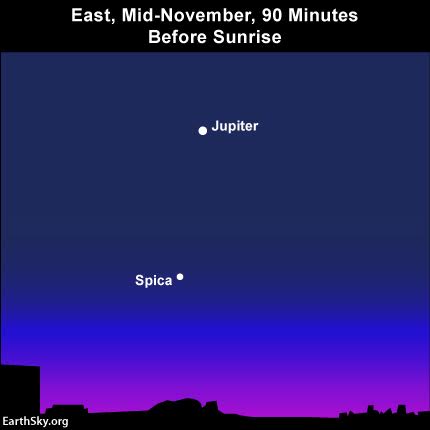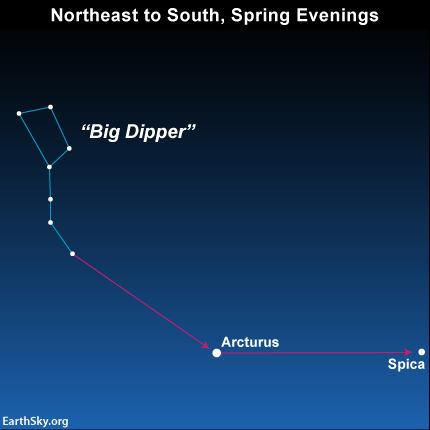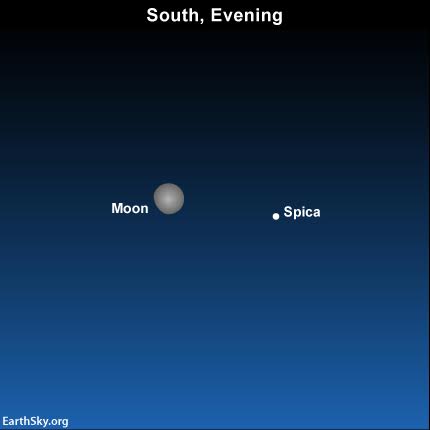Tonight – May 18, 2016 – the bright waxing gibbous moon again shines close to the star Spica. This star is the brightest one in the large, dim constellation Virgo, and also a key star of the Zodiac, the narrow band of stars in front of which the sun, moon and planets forever travel.
Because Spica is within the Zodiac – and because the moon travels on the Zodiac – you’ll see the moon pair up with Spica once (or sometimes twice) a month. If you watch, you can see that happen in the months ahead.
This year, in 2016, the sun will pass in front of the constellation Virgo from September 16 to October 30, and have its yearly conjunction with the star Spica around mid-October. At that juncture, Spica will transition out of the evening sky and into the morning sky. But Spica probably won’t be far enough from the glare of sunrise to become visible in the morning sky until early November 2016.
Dates of sun’s entry into each constellation of the Zodiac
By mid-November 2016, it’ll be easy to see the star Spica in the predawn sky. Jupiter, which is now an evening planet, will transition over to the morning sky in late September 2016, or roughly one-half month before Spica shifts over into the morning sky in mid-October. At present, Jupiter shines in front of the constellation Leo, moderately close to Regulus, Leo’s brightest star. But by the time that Jupiter and Spica become visible in the morning sky in the November of 2016, Jupiter will have moved significantly eastward in front of the constellations of the Zodiac. In other words, when the king planet Jupiter becomes a morning “star,” starting in November of 2016, look for Jupiter in front of the constellation Virgo (instead of the constellation Leo) and in the vicinity of Spica, Virgo’s brightest star.

Remember, you can always find Spica by using the Big Dipper as a guide, as shown on the chart below.
Enjoying EarthSky so far? Sign up for our free daily newsletter today!

Bottom line: Let the bright waxing gibbous moon show you the star Spica – brightest light in the constellation Virgo – on the evening of May 18, 2016.












